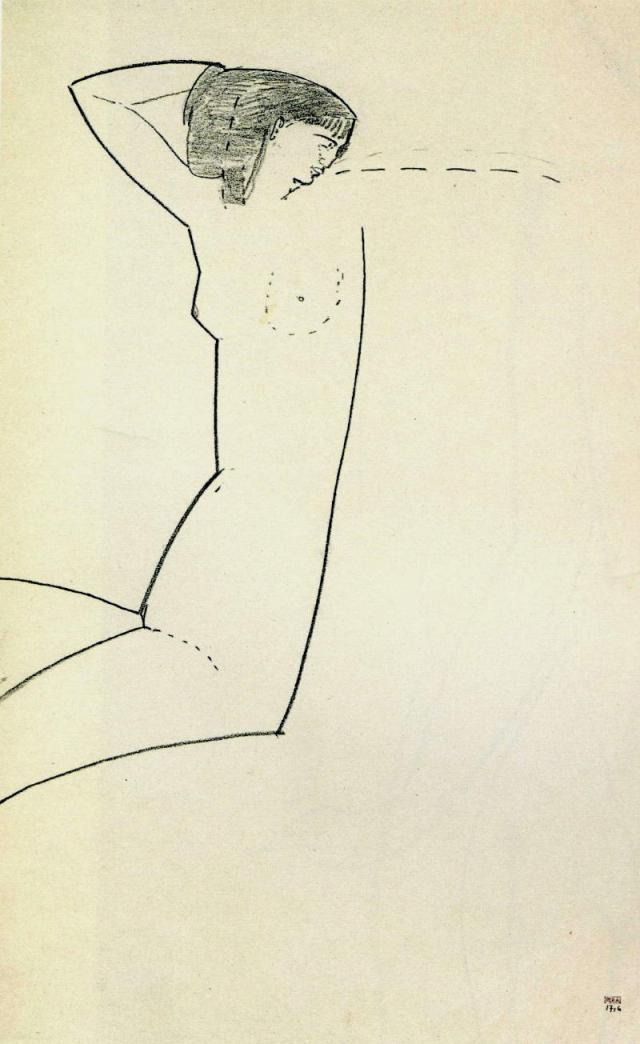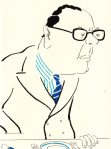Widmerpool’s unease with the artistic throughout Dance is bracketed by angular drawings, first his mocking pictograph in the cabinet de toilette at La Grenadière and now at the end of the novel by reappearance of the Modigliani drawing.
On the penultimate pages of HSH, Henderson unwraps the drawing, which has moved from Stringham’s possession to Pamela Flitton’s to Widmerpool’s, intertwined with Widmerpool’s rise and fall.
“The glass of the frame was cracked in several places; the elongated nude no worse than a little crumbled. It had been executed with a few strokes running diagonally across the paper. The marvellous economy of line would help in making it hard to identify — if anybody bothered — as more than a Modigliani drawing of its own particular period.” [HSH 250 ]

Anna
Amedeo Modigliani, 1911
black crayon 16 3/4 x 10 3/8 in
from ‘The Unknown Modigliani’ by Noël Alexandre
reproduced at richardnathanson.co.uk
We have previously shown some Modigliani drawings, but the additional description here suggests that Powell was thinking of the most simply drawn of Modigliani’s likenesses of Anna Ahkmatova. With a few lines, he reduced her beauty to its essential features. Perhaps Powell is drawing our attention to the stark contrast between Modigliani’s passionate relationship to the great Russian poet and Widmerpool’s difficult relationship to Flitton; yet there is similarity in that both women were objects of obsession.
